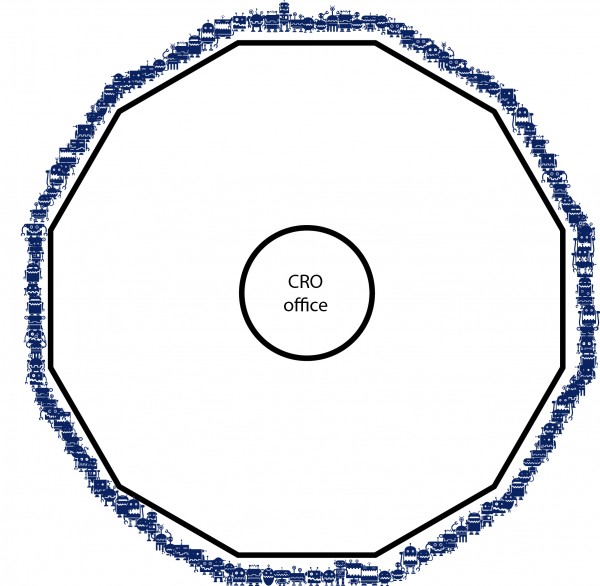Each issue of the Automation Notebook features a section we call, “The Break Room”. Now that you’ve successfully solved each puzzle, and before you brag to your coworkers, you can double check the brainteaser answers from Issue 34, 2016 of Automation Notebook below. If you want to return to the brainteasers questions, click here.
1.) Mirror, mirror, on the wall…
A child once asked about a mirror: Why does it reverse my image left to right, but not up and down?
Can you explain how a mirror works in a way that a child could understand?
Answer:
Of course, whether any explanation is going to be acceptable to a child is supremely subjective, but here goes:
It’s easy to think of your reflection in a mirror by imagining that your twin has walked around behind the mirror and is looking out at you – but this is not really helpful, and may be causing some confusion. Notice that your RIGHT ear, is reflected on the RIGHT side of the mirror. Same for your left. Your head is reflected at the top (unless you are upside down), and your feet are reflected at the bottom. Every point is reflected directly back by the mirror. If you need to think of something swapping, consider that the reflected image is swapped from front to back. Your actual nose is pointing into the mirror, your reflected nose is pointing in the opposite direction – out of the mirror.
2.) Rowbots
The owner at the puzzle factory wished to arrange all her puzzle-making robots into 12 rows of 11 robots each, and to position all the rows an equal distance from her circular office in the center of the factory. Her CRO (Chief of Robotic Operations) initially protested that there were only 120 robots in the factory.
Was the CRO able to oblige the owner?
Answer:
This one is simpler that most realize at first, as the robots at the corners are counted in both adjacent rows, and thus only 120 robots are needed to form the 12 rows:
3.) Queue See
The non-automated factory was experiencing quality control problems (again!). After a production run of 1000 widgets, they found a large number with serious cosmetic blemishes – and tossed them out. They ran the reminder through a series of tests. The first test detected problems with one-sixth of the remaining widgets, and they culled those as well. The second test exposed more problems and one-eighth of the remaining widgets were trashed (and then one widget was apparently lost). A final test showed one-fourth of the remaining widgets to be non-functional. The remaining (functional) widgets were grouped in to four equal groups for transport, and sent to the packaging area.
How many widgets were in each of those four groups?
Answer:
472 widgets initially discarded due to the cosmetic flaws
1000-472 = 528 widgets left before the first test
528 *5/6 = 440 widgets left before the second test
(440 * 7/8) – 1 = 384 widgets left before the last test
384 * ¾ = 288 functional widgets sent to be packaged
288/4 = 72 widgets in each of the four groups
This factory could really benefit from some automation – don’t you think?
4.) It’s not easy being Green!
What color is Smiley? Would you believe that all the Smileys shown below are the same color green? Cut or fold the page to put the green bars side-by-side, and you will see green! Or go online [and, here you are!] to our puzzle page for an electronic copy, and you can use your favorite graphics tool to verify the colors [below].

Answer:
You can use the graphics tool on your computer to verify Smiley’s color. This video might explain it better:


